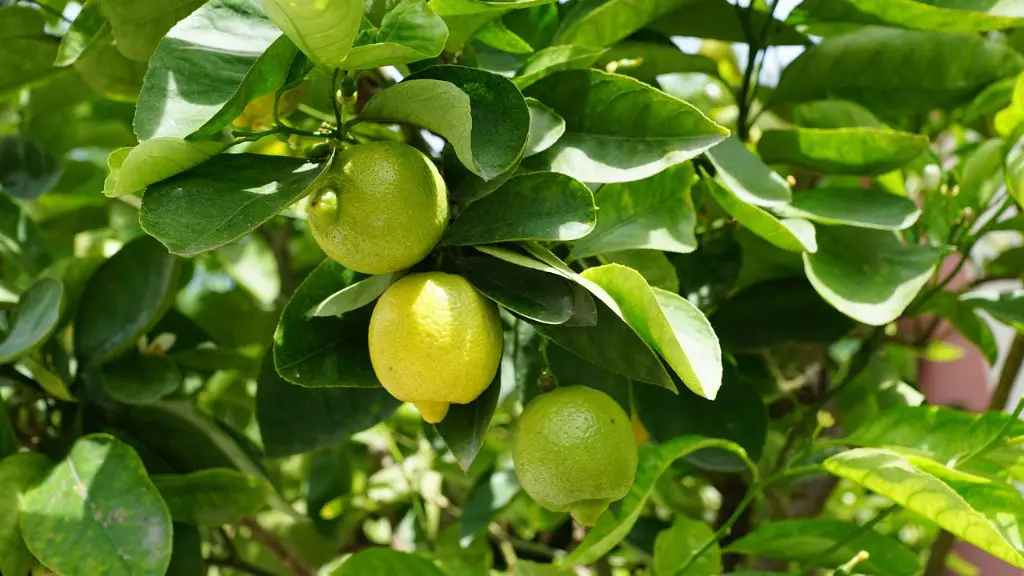Caring for a lemon cypress tree require an understanding of trimming techniques. Here are five steps to follow when trimming a lemon cypress tree. Firstly, determine the shape of the tree you want. Lemon cypress trees can be either cone-shaped, round-topped, or even pyramidal. Secondly, assess suitability of the current trunk and branches. Cut off any unwanted branches, making sure to leave ample foliage and growth. Thirdly, check for parasites, diseased branches and hollow cores. If these are present, trim them away completely. Fourthly, prune the tree to support the desired shape. Lastly, balance the canopy by increasing the space between branches. This will allow for light to penetrate and nourish the tree.
When to Prune?
When it comes to the actual trimming, timing is important. Pruning should be done during the cooler months of the year, such as late winter or early spring. This is when the tree’s growth is at a minimum, making it easier to identify branches that could benefit from pruning. Be sure to keep in mind the tree’s growth cycle when determining the best time to prune. Additionally, double check the temperature outside to make sure it is suitable for pruning.
Tools for Trimming
The tools needed to effectively prune a lemon cypress tree are fairly basic. A good pair of sharp scissors, a pruning saw and a pair of gloves are necessary. As with any tool, make sure to use them correctly and safely. If a branch is too big to cut with scissors, use the pruning saw.
Caring for the Tree Post-Trimming
Once the trimming is finished, the lemon cypress tree will still need attention. Provide the tree with the right amount of hydration. It may need daily or weekly watering depending on its environment. When watering, ensure the tree receives a thorough soaking but also that there is no standing water at the base of the tree. Additionally, fertilize the tree regularly to ensure it stays in good health and its vibrant foliage stays strong.
Other Benefits of Pruning
Not only does pruning create aesthetic appeal, but is can also benefit the health of the lemon cypress tree. Pruning allows for light penetration to be distributed evenly along the canopy, improving photosynthesis and providing the tree with more nutrients. It also eliminates dead wood, which can attract insects or cause disease. Furthermore, pruning prevents the growth of branches near other plants or fixtures, as well as prevents overcrowding in the canopy.
Why Professional Tree Trimming is Important
Though the above techniques are suited to the DIY crowd, there are some cases in which professional tree trimming is warranted. If you live in a particularly dry or warm climate, or if you’re dealing with a tree infested with pests, the services of an arborist are essential. An arborist can advise on exactly what type of pruning should be applied based on the species and size of your lemon cypress tree. Arborists are trained to properly trim trees, as well as to identify diseased branches, thereby avoiding spread of disease.
Healthy Habits for Trimming
When pruning a lemon cypress tree, numerous safety precautions should be taken. Invest in a good quality pair of protective eyeglasses and gloves to protect your eyes and skin from sharp branches. Don’t be afraid to rest in between pruning sessions to avoid over-exhaustion. Lastly, all tools should be properly disinfected before, during, and after trimming to avoid the spread of any diseases.
Restoring and Enhancing the Tree’s Shape
Restoring the natural shape and looking of the tree requires careful pruning. When pruning, look for weak branches that don’t contribute to the overall structure and aesthetic of the tree and cut them away. To restore and enhance the canopy, prune the top branches to provide a more balanced form. Also, focus on balancing the frame of the tree by pruning branches of similar lengths.
How to Revive a Neglected Lemon Cypress Tree
Overgrown and over-treed lemon cypress trees can be pruned to restore their natural shape and beauty. The best way to restore a lemon cypress tree is to prune back one-third of the canopy, particularly the longest branches. This will allow adequate light to penetrate the tree and stimulate growth of the inner canopy. Additionally, the tree’s by-products (wood, leaves, and other debris) can be removed to encourage and foster new growth.
Preventive Trimming Techniques for a Lemon Cypress Tree
Preventive trimming is a great way to keep your lemon cypress tree healthy and optimized for growth. This type of trimming involves removing smaller branches that overcrowd or obstruct the larger branches, as well as clearing away dead or damaged branches. Additionally, be sure to trim away any weak branches, as they strain the overall capacity of the tree and can threaten its stability. Furthermore, this type of trimming can stimulate the growth of unnecessary lateral branches, helping the tree maintain its cone-shaped appearance.
Using Proper Pruning Methods
Stem removal and notch pruning are two common pruning methods used to maintain the aesthetic of a lemon cypress tree. Stem removal is the removal of a branch, while notching involves using a saw to partially remove a branch. Both of these pruning methods should be done carefully and sparingly to avoid damaging the overall shape of the tree. When dealing with branches that won’t easily budge, make sure to use tools made specifically for pruning to get the job done.


